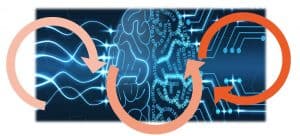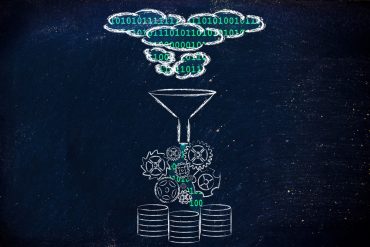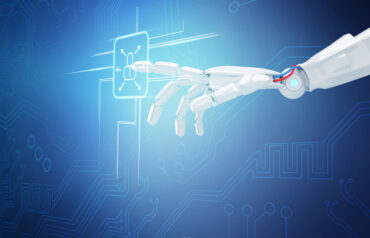
To truly benefit from automation, agents, AI and robotics, real-time enterprises must smartly sync “reflexes” and goals.
The term “autonomic” has rich connotations. It emanates from “autonomic nervous system.” As defined in Wikipedia: “The autonomic nervous system is a control system that acts largely unconsciously and regulates bodily functions.” There are definitely connotations of automation and autonomy: “This system works automatically (autonomously), without a person’s conscious effort.”
Now what does this have to do with the Enterprise-In-Motion?
Just about everything.
Using the analogy of the human body, the Enterprise-In-Motion has a “conscious” operational mode reflected in the aggregate of its value chains. These value chains occupy different categories: Mission Critical Value chains, Support Value chains, Methodology Value chains, Management Value chains, Supply Value chains – to name a few. Most are visible and under control within various business units, who typically collaborate to accomplish its objectives. These correspond to the central nervous system and the somatic peripheral nervous system: under voluntary control.
The enterprise also has an autonomic nervous system. Its many complex exceptions, implicit cultural behaviors, and automatic self-optimizing and self-healing responses can provide tremendous advantages to the Enterprise-In-Motion.
It can also malfunction.
Enterprises cannot ignore the negative consequences of unanticipated autonomic actions. The Enterprise-In-Motion needs to leverage automation as much as possible. At the same time, voluntary as well as autonomic responses must be consistent with enterprise objectives. That’s a very tall order.
An enterprise might be unaware it is responding and moving in a certain direction – until it’s too late. Often-opaque autonomic behavior can get very complex when cultures, habits, and bad behaviors accumulate over many years, even decades.
A simple, widespread example:
Many enterprises claim to be “customer-centric.” Ads, communications, and corporate objectives emphasize the importance of the customer. Various Customer Relationship Management decisions and value chains are monitored and controlled to support this critical priority.
Yet many enterprises fail miserably and have suboptimal net promoter scores. Why? Because cultural behaviors or automatic responses may not support – and may even contradict – corporate objectives. Consider, for example, a harshly worded letter or email sent automatically to a customer for an unresolved response, a claim, or delayed payment. The agitated customer contacts the organization for an explanation, only to be told the missive is “automatically sent” by the Legal or Finance department!
The larger and more hierarchical an enterprise gets, the more such autonomic behavior permeates. Some brings tremendous self-governing and self-healing advantages. At other times, the consequence is unexpected and undesirable, such as customer churn triggered by events like those described above. Autonomic behavior can be ad-hoc and unpredictable, or governed and optimized. In either case, it is unavoidable.
It is a challenge.
It can also be an opportunity.
Autonomic Computing: Gaining Momentum
There have been several approaches and applications of “autonomic” to computers and information technologies. Consider an interesting definition of Autonomic Computing, from a book with the same title: “Autonomic computing is the ability to manage your computing enterprise through hardware and software that automatically and dynamically responds to the requirements of your business. This means self-healing, self-configuring, self-optimizing, and self-protecting hardware and software that behaves in accordance with defined service levels and policies.”
Given the focus of the computation on information technologies, the emphasis on business requirements is interesting. There is a gap, however, especially in the lack of focus on end-to-end digitization and automation of value chains.
The ability of computer systems to govern themselves with little or no human intervention has tremendous value. While the concepts and approach of Autonomic Computing have been around for a while, recent advances in artificial intelligence, robotics, and agent technologies – combined with the incredible complexity of computing environments – are giving new impetus to embed autonomic computing approaches in existing and emerging applications and systems.
Software systems, applications, or solutions that automatically predict, fix, govern, and optimize with little or no human intervention are exhibiting autonomic behavior. Examples of Autonomic Computing include autonomic networks, autonomic database management systems, and autonomic maintenance to name a few. The core premise is that self-governance with little or no human intervention is becoming a necessity.
Autonomic networks, for example, need a common protocol across the network of networks to communicate effectively – or at all. That protocol is TCP/IP, and it works well. At the higher levels of a Digital Transformation architecture, a common language or protocol for communication is key. It cannot be a computer program; that has its own complexity. It cannot be a lower-level protocol like any of the levels of a multi-layered architecture. So, what is it?
A common protocol, in fact, exists. It goes back to the core and essential definition of enterprise as a collection of Value Streams. Each encompasses various policies, collaborative tasks in workflows, various categories of monitoring, and data generated and operated upon.
Robot to Expert: The Spectrum of Automation
Autonomy relies primarily on automation – for all types and categories of work. Automation is a spectrum that spans from repetitive to more cognitive and creative work. From left to right, there is less predictivity in the autonomic behavior of the Enterprise-In-Motion.
- Repetitive Work Automated through Robots and Robotic Automation: Increasingly, robots are replacing routine predictable and repetitive manual work. This is sometimes characterized as the “long tail” of tasks allocated to relatively low-paying repetitive jobs managed by the business (as opposed to IT). Such work can now be automated with robots. These include actual physical robots that can manage a warehouse, move boxes, clean floors in large plants, and in manufacturing. On the IT side, increasing robotic process automation solutions are leveraged successfully in customer relationships as well as back-office operations. It is truly a pragmatic approach for automating work — especially in organizations with many legacy systems.
- AI Assisted Work: Now, for more mission-critical and higher-business value (and typically higher transaction volume) tasks, AI-assisted workers are guided by increasingly intelligent software that leverages business rules, analytics, and machine learning. It’s similar to an intelligent Siri or Alexa helping a worker complete tasks. Increasingly, workers are assisted by bot and Intelligent Virtual Assistants with increasingly sophisticated Natural Language Processing capabilities combined with contextual knowledge for the task or interaction at hand. AI-assisted solutions are becoming increasingly intelligent: especially in end-to-end value streams empowered with underlying rich intelligent capabilities such as rules, predictive analytics, machine learning adaptive analytics, and Big Data recommendations.
- Involving Cognitive or Knowledge Workers: Knowledge workers are cognitive workers and experts. Some have accumulated considerable knowledge and expertise. When these workers start to retire, irreplaceable know-how is lost. So a complete digitization strategy needs to also capture, digitize, and automate such knowledge. The autonomic responsiveness of this important category of workers often reflects the culture of the organization. No “artificial” intelligence can replace them. They innovate and often devise organizational policies and procedures. Knowledge workers can be engaged to resolve cases or processes. They can also analyze the reports and the performance of operationalized processes.
The automation spectrum operates in the Enterprise-In-Motion ecosystem that is increasingly connected and decentralized. The spectrum can involve robots, agents, assistants – with potentially autonomic solutions that self-optimize, self-heal, and self-govern.
Part II of the Autonomic advantages for the Enterprise-In-Motion will delve deeper into autonomic IoT Edge Computing, autonomic decentralization with Blockchain – especially for Decentralized Autonomous Organizations. The piece concludes by returning to autonomy in Value Stream-As-A-Service, with a focus on the virtual and extended Enterprise-In-Motion.






























